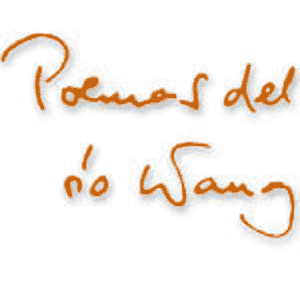 The ant and the grasshopper. T-shirt design by toe2254
The ant and the grasshopper. T-shirt design by toe2254Aesopus has left to us only a corrupt and pedestrian version of the fable of the ant and the grasshopper, asserts Poly in her beautiful post entitled The cricket and the plebs. According to the apocryphal original published by her, the cricket wanted to gather reserves for the winter just like the ant did. But there was his marvelous talent which did not let him rest and kept commanding to him like the daimon to Socrates in Phaidon 60e: Μουσικὴν ποίει – Make music! And the cricket could not but make music, hoping that those listening enchanted to his art in the summer will take care of him in the winter. It did not happen so. The doors of the granaries were closed in his face, everybody turned away of him, and the cricket died in misery and abandoned by all – just like Socrates.
 Design of Steve Morrison from the series of illustrations made with the use
Design of Steve Morrison from the series of illustrations made with the useof Greek motifs to the fable of the ant and the cricket
The story of Poly reminded me of another version of the fable. The beautiful Spanish film Los lunes al sol – Mondays in the sun (2002) is about five unemployed workers who were recently laid off together with thousands of their colleagues during the cutback of the Galician ship building industry. To us who are accustomed to the gloomy atmosphere and the images of ruin in Eastern European documentary films, it was particularly unusual and staggering that this film did not only present the hopelessness of the situation and the tragedies stemming from it, but again and again also the force of solidarity that is able to keep people on the surface even in the most difficult situations.
A memorable moment of the film is when Santa, the lead of the film substitutes for a night for the teenager daughter of his friend who works as a baby-sitter at a rich family, but wants to go out with her boyfriend. Santa reads to the child the story of the ant and the cricket.
| La cigarra y la hormiga. Bueno, vamos a ver. Érase una vez un país en el que vivían una cigarra y una hormiga. La hormiga era hacendosa y trabajadora y la cigarra no. Le gustaba cantar y dormir, mientras la hormiga hacía sus labores. Pasó el tiempo, la hormiga trabajó y trabajó todo el verano, ahorró cuanto pudo, y cuando llegó el invierno, la cigarra se moría de hambre y de frío, mientras la hormiga, tenía de todo… ¡Qué hija de puta, la hormiga! La cigarra llamó a la puerta de la hormiga, que le dijo: Cigarrita, cigarrita, si hubieras trabajado como yo, ahora no pasarías hambre y frío… ¡¡y no le abrió la puerta!! ¿Quien ha escrito esto? Porque esto no es así. Esto no es así. La hormiga esta es una hija de la gran puta y una especuladora. Y además, aquí lo que no dice es por qué unos nacen cigarras y otros hormigas, porque si naces cigarra estás jodido, y eso aquí no lo pone, ¿eh? ¡eso aquí no lo pone! | The ant and the cricket. Well, let's go. There was once a country where there lived an ant and a cricket. The ant was diligent and hardworking, but the cricket no. He only liked to sing and to sleep while the ant did its work. Time passed, and the ant just worked all over the summer, he saved as much as he could, and when winter came, the cricket was starving and having cold, while the ant had everything… What a son of a bitch, the ant! The cricket knocked on the door of the ant who told him: My dear cricket, if you had worked like me, now you would not go hungry and having cold – and he did not open the door! Who wrote this? Because this is not like this. This is not like this. The ant is a huge son of a bitch and a profiteer. And besides they do not say anything about why some are born as crickets and others as ants. And neither why you are always screwed if you were born as a cricket. They do not say it here, eh, they do not say it! |
This Sunday in the downtown church the popular priest was expounding the story of the Good Samaritan. His leitmotif was that nowadays you cannot know what kind of people you encounter, and that whoever appears to be in need usually only wants to dupe you. Along this motif he finally arrived to the conclusion that in the parable it was most probably the priest and the Levite who took the correct action. I wanted to gave news about this radical turn of the exegesis, but I myself did not know where to begin it. This last version of the story of the ant and the cricket now provided the textus to it.
 The ant and the grasshopper/cricket. Against idleness. The child’s illuminated fable-book, 1847
The ant and the grasshopper/cricket. Against idleness. The child’s illuminated fable-book, 1847























































































Add comment